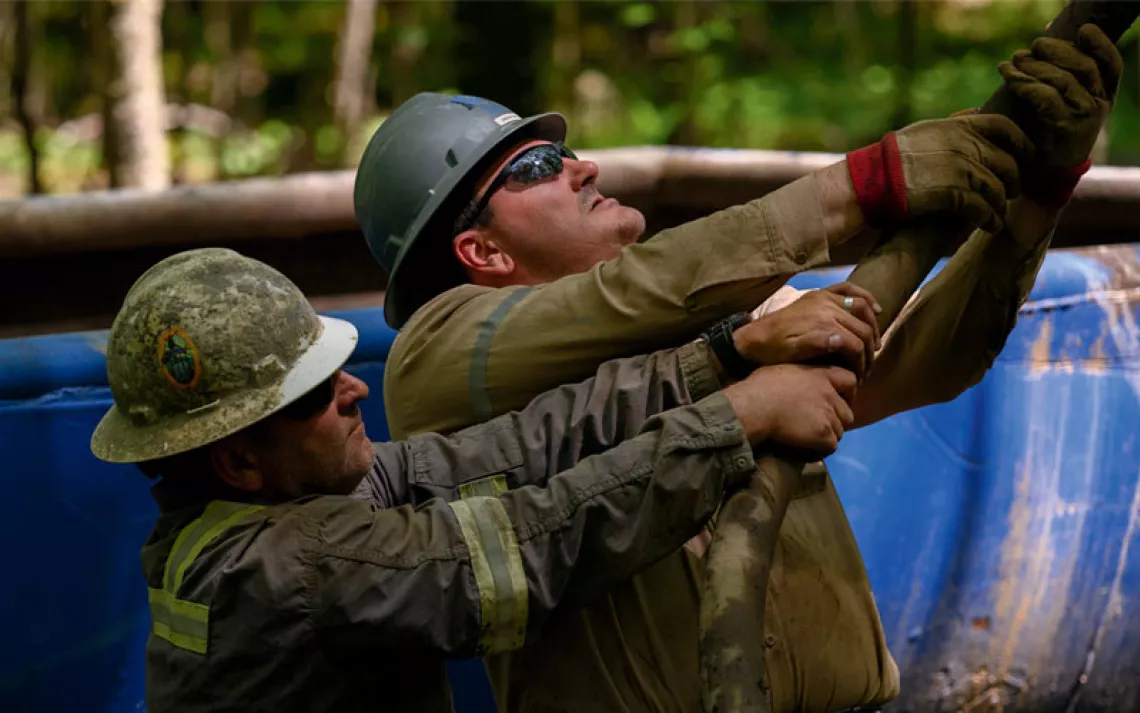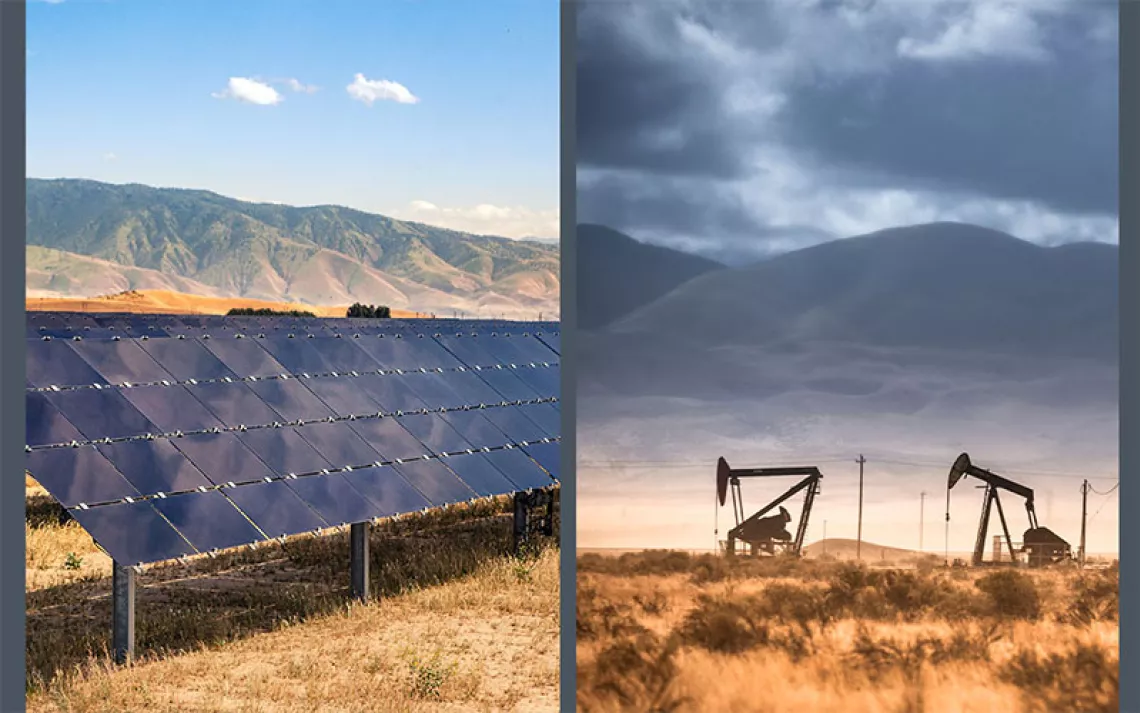What Can We Learn From the Worst Oil Spill in Decades?
The Sanchi was a deadly collision of policy and politics

A rescue ship sails near the burning Iranian oil tanker Sanchi in the East China Sea off the eastern coast of China. | Photo by Ministry of Transport via AP
Former China Marine Surveillance official Yu Zhirong wonders if the pollution from the Sanchi—the largest oil spill in decades—could have been reduced if the government had chosen to torpedo the burning vessel, allowing the fuel to burn out before sinking. “This is better than sinking with the tanks full, because the fuel would leak into the waters,” Yu said.
Over a month after it collided with a shipping vessel in January, Sanchi is still lying 377 feet under the East China Sea, possibly still leaking bunker oil from its fuel tanks. The Chinese government was considering salvage of the remains of the sunken tanker last month, but said it was waiting both to consult Sanchi’s owners about salvage plans and to come up with a safe and feasible plan to remove it. Zhi Guanglu, deputy director of the China Maritime Search and Rescue Centre, told reporters for the South China Post that retrieving wreckage could cause another explosion. Meanwhile, the oil slick has spread across the path of gray whales migrating from the colder waters of Russia to the warmer South China Sea.
Meanwhile, the question of how to handle another incident like Sanchi is something that even experts are reluctant to discuss. Dr. Karen Purnell, technical advisor to the International Tanker Owners Pollution Federation (a nonprofit that describes itself as “providing impartial advice worldwide on effective response to spills of oil and chemicals at sea”) wrote that getting expert advice about the Sanchi oil spill and its after-effects would be unlikely, “until the facts are known.” Natasha Brown, a press officer with the International Maritime Organization, said that her organization is refraining from discussing the Sanchi spill, and “will await the investigation report from the relevant states."
The report Brown mentioned is unlikely to be released publicly until several months from now. Richard Steiner, a former marine conservation professor at the University of Alaska, was one of several marine conservation experts who emailed the relevant authorities in China, Japan, and the UN with the recommendation that they move quickly to collect information about the spill, by modeling the trajectory of the spill in order to estimate where the condensate was dispersing, and by taking samples of water, plankton, fish larvae, and any carcasses seen floating near the where the Sanchi sank in order to create a record of how the spill was affecting local wildlife. This, Steiner said, “would have helped determine the details of condensate that burned, evaporated, or dissolved.” Steiner has received no sign that these recommendations were followed and worries that critical environmental data was not collected in the days and weeks after the accident.
The Panama-flagged, Iranian-owned Sanchi was sailing from Iran to Korea on January 8 when it ran into the CF Crystal, the Hong Kong–flagged freighter. The vessels collided 186 miles off the coast of Shanghai. Both China and South Korea sent rescue boats to the scene of the collision but were forced to retreat when the burning vessel exploded.
The Sanchi was carrying 136,000 tonnes of natural-gas condensate, an ultra-light crude oil that is used most commonly to produce petrol, jet fuel, diesel, and heating fuels. Condensate is much lighter than water and can be expected to rise up to the surface and evaporate when mixed with water because of its low density. It’s also extremely flammable, highly toxic if inhaled, and potentially fatal if swallowed. It may also cause genetic defects, cancer, and damage to organs (liver, kidneys, blood, nervous system, and skin) through prolonged or repeated exposure. While some condensate fires can be fought with water sprays or fire-fighting foam, larger ones often need to be left alone to burn out.
The only other recorded case of a condensate oil spill is from 1980, when the Juan Antonio Lavalleja spilled 28,000 tonnes of it after plowing into a breakwater in Algerian waters, in the port of Arzew. There was no fire and no cleanup, and there were no recorded casualties. “This is the first condensate spill that caught on fire in maritime history and has been extremely challenging to deal with,” said Chi Kuanglu, one of the Chinese officials who led the salvage mission—one that was interrupted, Chi said, by constant explosions. The oil slicks photographed in the wake of Sanchi likely came from the 2,000 metric tons of bunker fuel that powered the engines. On January 14, China’s maritime authorities saw a massive explosion in the moments before the tanker sank in Japan’s exclusive economic zone, about 124 miles off the coast of Okinawa. After extinguishing the last of the fire from the sunken tanker, the Chinese government dispatched 62 boats to skim the water for oil slicks. Some 10 days after Sanchi sank, China’s Ministry of Transport sent out unmanned submarines with robots to plug the damaged vessel, in order to try to stanch the fuel leaks.
Both the Chinese and Japanese governments have received criticism from environmental groups and marine life conservationists for having hesitated in the days after the collision. The delay is likely due to China and Japan’s long-standing tension over ownership of uninhabited islands in the East China Sea, with neither side willing to trigger a negative reaction by venturing into one another’s marine territories.
The Petroleum Association of Japan holds annual meetings and workshops with the Japan Coast Guard about future oil spill response management, but most were focused on spills involving tanker fuel and crude oil, rather than condensate. Likewise, China does not appear to have a ready response plan to marine accidents concerning condensate. After China pitched in to help clean up the Deepwater Horizon oil spill in the Gulf of Mexico in 2010, Chinese Maritime Safety Administration expert Tung Yen briefed the Chinese state media on China’s emergency oil spill response plan, drafted in 2000. “The cleanup should be done by the vessel that caused the spill, and the state has the power to intervene if the cleanup procedure is deemed incorrect,” Tung said. Sohu, a Chinese online news site, reported in 2011 that “the response plan doesn’t cover a lot [of potential situations], so there is some difficulty in carrying it out. The next step should be drafting a detailed plan for emergency response protocol when oil spills occur.” It is unclear if China has updated its response plan since then.
The follow-up in the Sanchi case was complicated, Steiner said, because “the flow of information was controlled by two of the most nontransparent governments in the world—China and Iran.” Steiner has doubts that Iran was being completely honest about the tanker’s cargo. “We still do not know if it was entirely condensate or what type of condensate it held.”
Marine pollution (particularly when oil is involved) is not clearly regulated in any particular global environmental convention. Still, Steiner said, “most countries would be on top of this situation, even if it occurs in far offshore waters.” Instead, for nearly a month after the Sanchi sank, China's and Japan’s governments did not announce any changes in fishing in the waters around the spill, which are home to some of the most productive fisheries in the world. Japan monitored the migration of the oil slicks but did not announce if fishing in the East China Sea would be put on hold. On February 1, almost a month after the crash, China announced that traces of petroleum hydrocarbons were found in fish samples collected four to five nautical miles from the wreck. Beijing officials promised to monitor waters that were within 90 nautical miles of the sunken tanker and keep an eye on seafood coming into nearby fish markets.
That is a more cautious approach than the one Steiner hoped for. “For the delayed action on both sides,” Steiner said, “I suggest China and Japan seal off all fishing activity until the seafood is confirmed to be toxin-free.”
 The Magazine of The Sierra Club
The Magazine of The Sierra Club



